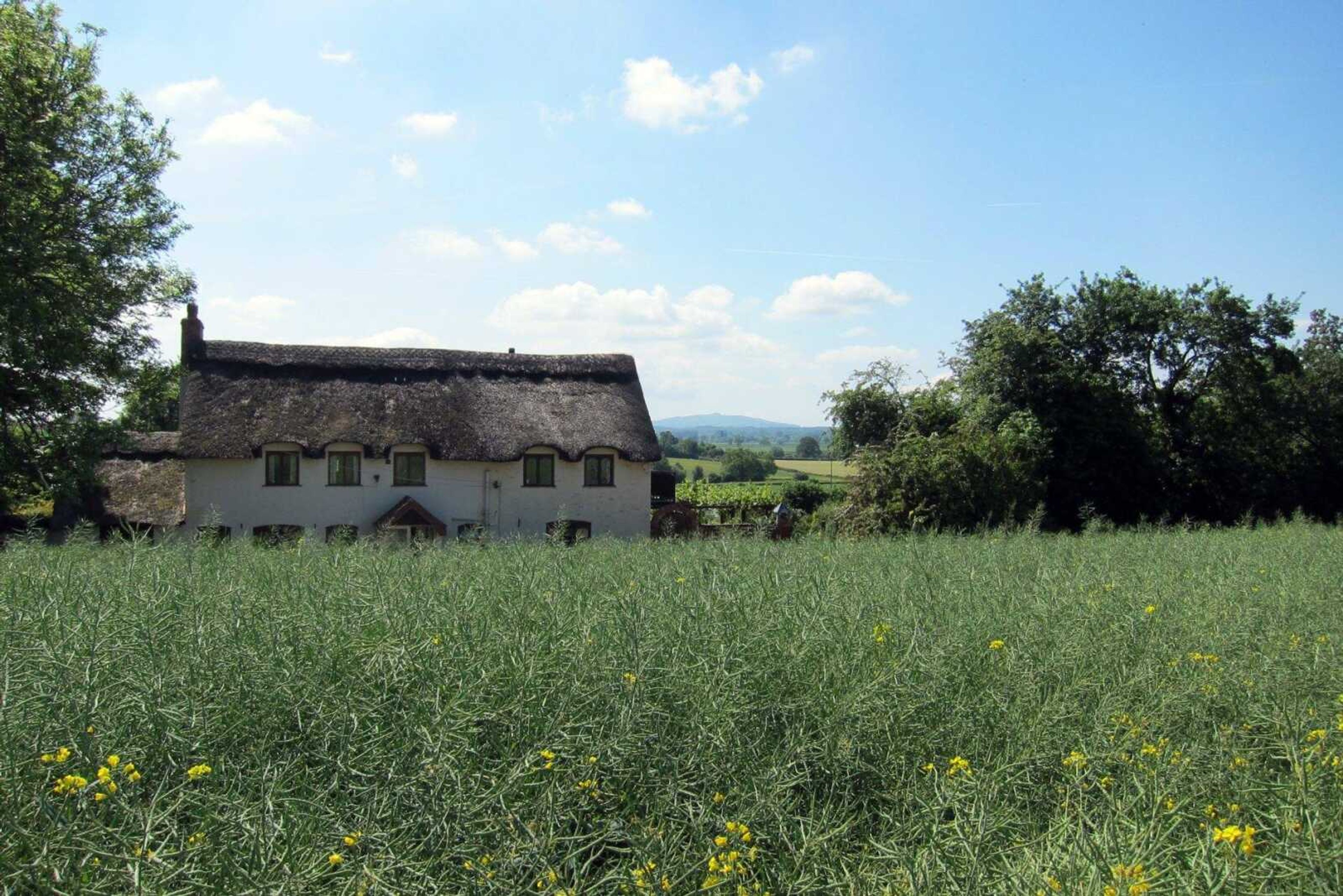Frost's '2 roads diverging in a yellow wood' might be in England
DYMOCK, England -- The woods were cool, a welcome balm on a hot day. Shafts of sunlight poured through the canopy. Slowly, I walked down a track thick with long-fallen leaves. And then I found it. It wasn't much to look at, just a spot where the path split. But that was the point...
DYMOCK, England -- The woods were cool, a welcome balm on a hot day. Shafts of sunlight poured through the canopy. Slowly, I walked down a track thick with long-fallen leaves.
And then I found it.
It wasn't much to look at, just a spot where the path split. But that was the point.
Could this be the fork that inspired one of America's favorite poems, the one beginning, "Two roads diverged in a yellow wood"?
Mention poet Robert Frost and everyone thinks of New England. But the wood I stood in was an ocean away, a three-hour drive west of London.

Frost had moved to England to make his mark on the literary world. He spent a year or so in a writers' colony, centered in the village of Dymock.
That experience shaped some of his best-known works, including the iconic "The Road Not Taken."
Few poems are more esteemed in the American literary canon. Some believe the poem expresses core American values of choice and self-reliance.
But I'd set out to discover Frost in this English landscape.
Guiding me was Richard Simkin, chairman of the Friends of the Dymock Poets, a group dedicated to preserving the area's literary heritage.
Starting beside Preston Church, we took a footpath through an apple orchard, then a newly planted maize field. Up a hill, then down through a head-high crop of oilseed rape. To our right stood Oldfields, a handsome, thatched farmhouse.
In the summer of 1914, Oldfields was home to Frost's close friend, writer Edward Thomas.
The two men often talked as they walked through the countryside. But when the path they were on split, Thomas always dithered. And that is the genesis of Frost's poem: written not as a manifesto of American values, but as an affectionate tease.
Thomas and Frost lived so close by that they could shout to each other, so it took no time for us to reach Little Iddens, the half-timbered cottage where Frost lived.
In 1914, it was a small house in a potato patch. Today, it's a fine home, renovated and enlarged, rising up behind a high, green hedge.
Oldfields' genial owner had invited us in for tea.
No such luck at Little Iddens, where there was no sign of movement. Perhaps the occupants had seen us coming. Literary pilgrims should remember these are private homes and behave accordingly.
It was easy to see how Frost had been inspired here.
The area is beautiful, set between the Malvern Hills and May Hill, with its distinctive clump of Scots pines. The land dips and folds into orchards, fields and tiny hamlets interspersed with woods.
Little Iddens is the most complete reminder of Frost's presence, but also intriguing are locations where no trace remains.
Frost drafted "The Road Not Taken" at nearby Ryton at The Gallows, a site once comprised of two cottages. Only one dwelling survives. Was the poem written there, or in the house long gone?
Then there is the forest cottage where a gamekeeper pulled a shotgun on Frost and Thomas in a trespassing dispute.
Today, not a brick survives. It's a lonely spot, overgrown with nettles and overshadowed by oak, ash and elder trees.
Did this copse, and this incident, feed into Frost's famous "Stopping By Woods On A Snowy Evening," in which the author savored an illicit, unchallenged stop on private land? The poem begins, "Whose woods these are I think I know."
That brings me back to the cool wood and the fork in the path.
Was I in the right spot? Or was it the next fork? Or the next wood?
The text doesn't tell us, and Frost never said.
Frost biographer Jay Parini, a professor at Vermont's Middlebury College, confirmed the location of the poem's divergent roads is unknown, "so it's very possible that Dymock was the place."
The wood wasn't yellow on my visit, but it is yellow in early spring, thanks to a profusion of daffodils, and it may be yellow in autumn too. Simkin also wryly pointed out a buttercup meadow nearby.
His guidance was invaluable, but visitors can find their own way well enough. There are two signposted Poets' Paths, plus other related walks and a series of beautifully illustrated maps -- including one called "Walks in Dymock Woods" -- by local artist Barbara Davis.
Connect with the Southeast Missourian Newsroom:
For corrections to this story or other insights for the editor, click here. To submit a letter to the editor, click here. To learn about the Southeast Missourian’s AI Policy, click here.










